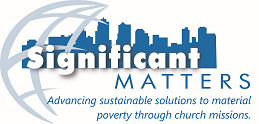Economic Missionaries
The New Church Mission Frontier: Economic Missionaries, Impact Investing & Innovation with the Business-Minded
The big story of community and spiritual transformation as well as poverty alleviation around the world could be sitting in church pews today. Could the most effective way for the church to alleviate poverty be to equip and release business people, equip economic missionaries and participate in impact investing, leading to job creation and human flourishing? Meet some of the innovators from SATtalks wrestling with how to make a bigger spiritual and economic impact in the world and how the local church can be better equipped to lead the way.
Download – Economic Missionaries
Asset Based Community Development
Stan Rowland – Collaborative for Neighborhood Transformation www.neighborhoodtransformation.net
This is a short overview of the underlying principles and rational of an asset-based approach to community development rather than a needs-based approach.
Download – What_ is_Asset_Based_Community_Development
Collective Impact
John Kania & Mark Kramer – Stanford Social Innovation Review
“Large-scale social change requires broad cross-sector coordination, yet the social sector remains focused on the isolated intervention of individual organizations.” This paper describes the TYPE OF COLLABORATION the Co-Op has been working on and the various “upfront costs” to partnering organizations it takes to move from “isolated impact” to “collective impact.”
Download – Collective Impact_Stanford
Holistic Sustainable Community Development
Tom Bassford, Executive Director of Significant Matters
This is a brief overview of the development strategy behind the work of Significant Matters.
Download – Holistic Sustainable Community Development
Understanding the Value of Backbone Organizations in Collective Impact
Shiloh Turner, Kathy Merchant, John Kania, Ellen Martin
FSG and The Greater Cincinnati Foundation (GCF)have partnered to understand and evaluate the role of backbone organizations in collective impact efforts. Originally published as a four-part blog series by the Stanford Social Innovation Review, this article shares FSG’s and GCF’s experience of working with a cohort of six backbone organizations in Cincinnati to help funders and practitioners understand what it takes to be a backbone and what the value of this necessary, though often behind the scenes, role is in collective impact.
Download – Understanding the Value of Backbone Organizations in Collective Impact
